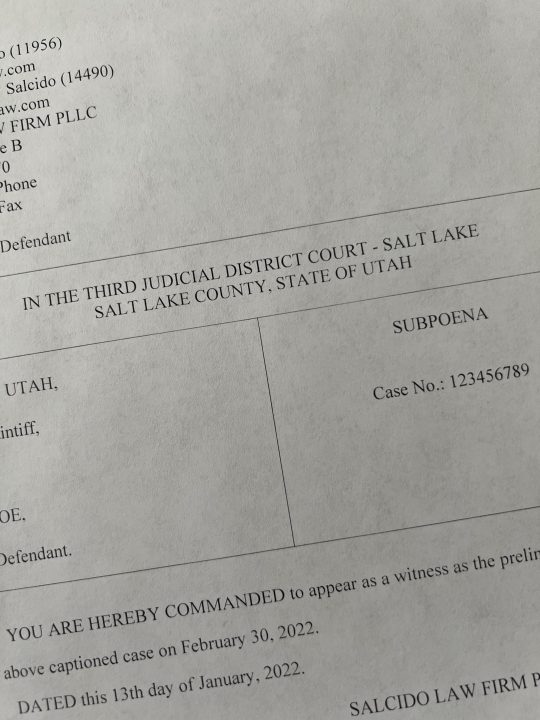In Utah divorce cases, and other civil litigation for that matter, there various types of motions that can be filed for relief. The most common motion for family matters is the motion for temporary orders. Temporary orders permit a client to get relief that can last throughout the proceedings until a final divorce decree has been entered. Common relief sought is for temporary child custody, child support, and alimony. In order to get relief in any type of motion the party who files the motion carries the burden of proving that he is entitled to relief. In order to satisfy his burden he must present evidence, but “evidence” must be admissible and reliable or the court does not have to consider it.
What Type of Evidence is Admissible?
In order to get your evidence admitted by a court there are some key things you must establish. The Utah divorce attorneys at Salcido Law Firm PLLC work diligently to make sure that any and all evidence presented is such that the court will consider it and admit into the record. Below are three things that Salcido Law Firm PLLC does to make sure evidence is admissible at court:
- The evidence must be authenticated. What that means is that the party presenting the evidence must be able to show that someone who has first hand knowledge of the evidence is able to testify under oath that he knows the evidence to be true. For example, if you want to admit a photograph, the person who took the photograph should authenticate it to prove that it is what the party presenting it says it is. If you present a document, you must be able to show that the person who created it or the person who received it can testify to its authenticity.
- Avoid hearsay. Hearsay is any out of court statement made by a declarant that is offered for its truth. Hearsay is not admissible unless it falls under an exception to the rule. Exceptions include statements made by a party opponent, documents kept in the ordinary course of business, medical records and various other exceptions.
- Make sure your witnesses are present at the court hearing. If you want to present evidence of which only a third party has personal knowledge, that third party needs to be present to swear under oath to the evidence you wish to present. Affidavits and declarations made by witnesses are generally not enough because they are considered hearsay statements that are not admissible.
If you keep the above three things in mind, you will avoid a lot of problems at the trial court level and you will get closer to obtaining the relief you seek.




